Pieces of paper seem to appear out of nowhere in my studio! Old project templates, exhibition programs, travel brochures, design sketches, project ideas, magazines, artist cards and reminder notes just turn up. They start out neatly arranged, ostensibly, to serve as visual reminders. But then they multiply until they cover every flat surface. And before long, they’ve grown into meaningless piles of paper. Admittedly, I put off dealing with the paper clutter as long as possible. But when the stacks fall over, it’s time to sort, purge and organize!
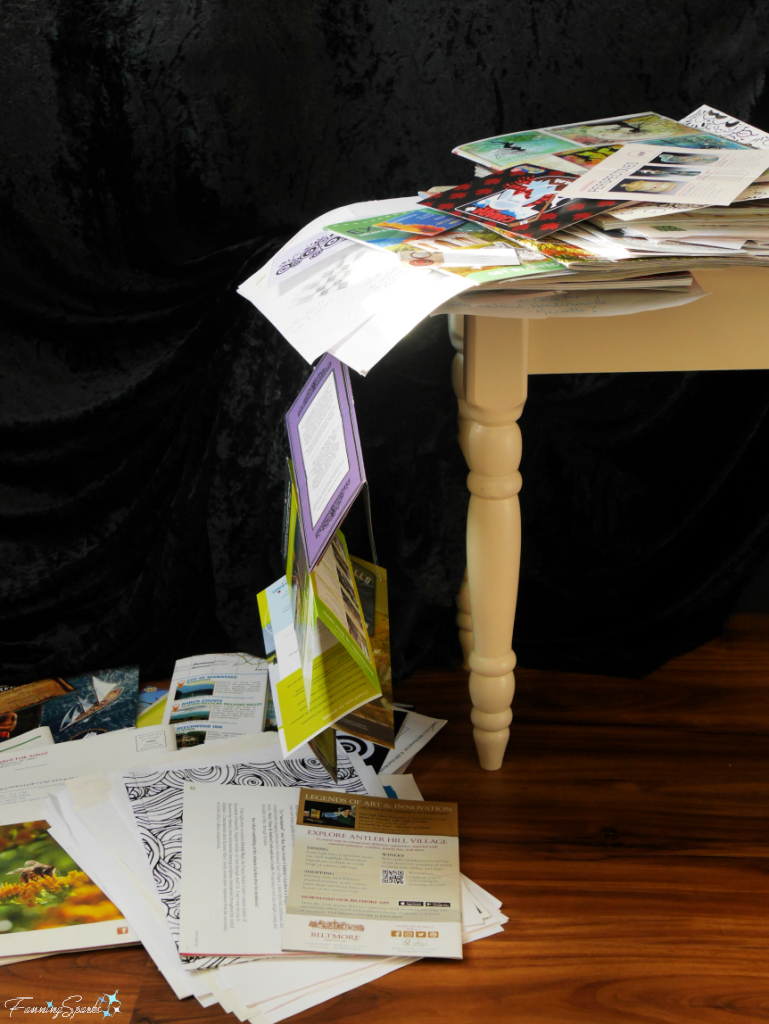
With the exception of this paper clutter, my studio is pretty well organized. A growing collection of project trays is the key to keeping order. The 12” x 12”, clear, plastic bins are ideal for storing project supplies and tools as well as works-in-process. See my blog post The Ultimate Maker’s Cabinet for the full scoop.
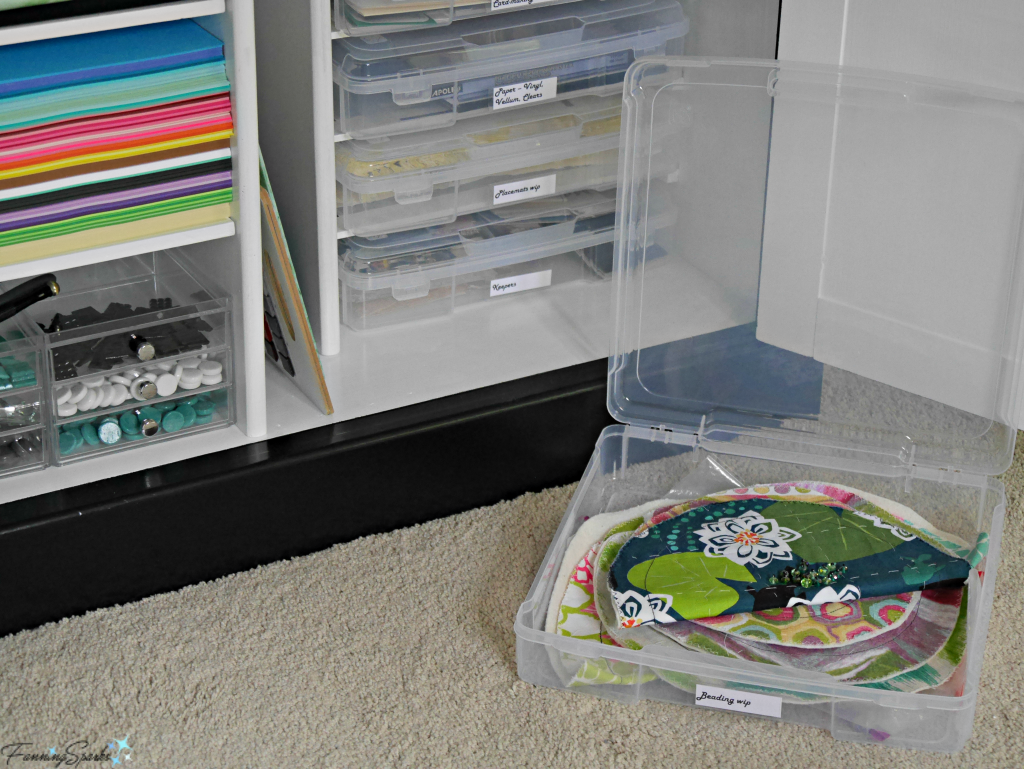
These project trays and other storage aids are typically on sale in January so it’s an ideal time to stock up. Plus, there’s a lot of attention on decluttering, cleaning and organizing. January is designated “Get Organized (GO) Month” by the National Association of Productivity & Organizing Professionals (NAPO). There are lots of catchy slogans like “New Year, New Slate” to promote the effort. Each day, a different area of focus, such as the linen closet, garage, books or children’s toys, is called out by NAPO members. By happy coincidence, January 13th was deemed as the day to deal with “Crafts”. As shown on the below Instagram screenshot from the #GoMonth2023 campaign, there are three important steps to complete: Evaluate, Declutter and Organize. So not only is dealing with my craft-related paper clutter necessary, it’s also on trend!
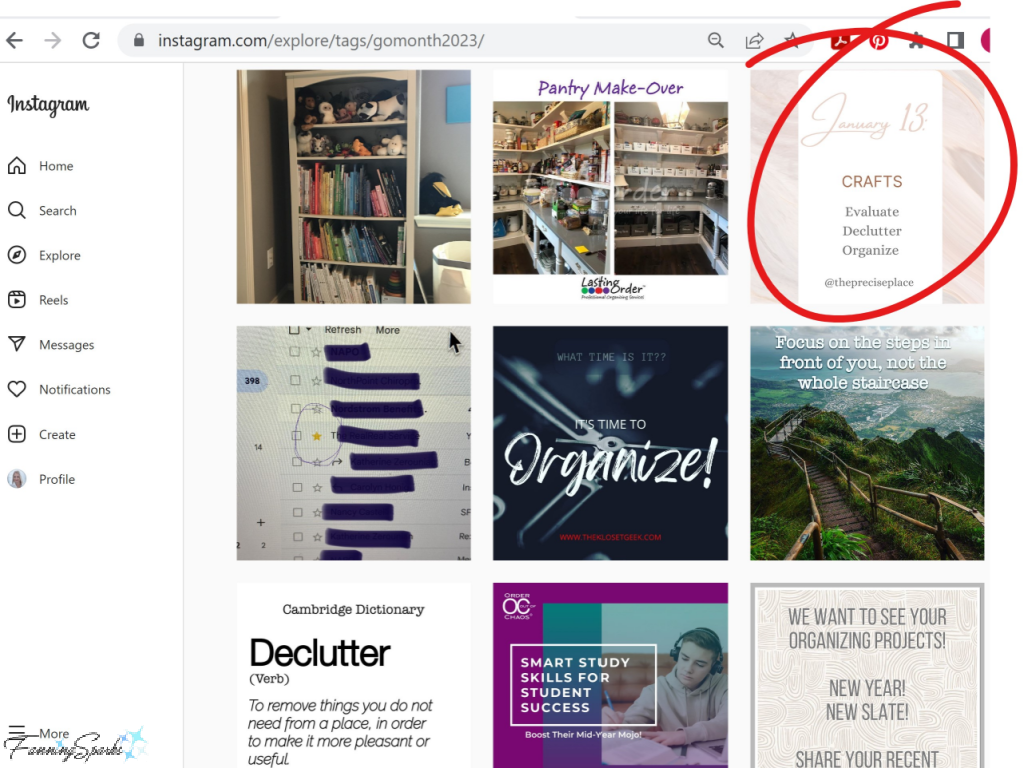
I’ve decided to try a different approach for my papers this time—filing. Groundbreaking, I know! It’s not that I’ve never filed—I’ve certainly filed my fair share of work papers and home/life administration papers—it’s just that I’ve never found a filing system that actually worked for the papers related to my hobbies and travels.
Luckily, I found three wooden file storage boxes in the basement that I could repurpose for this project. The best part is the storage boxes were unfinished. I could simply have painted them. But, in my world, that would be a huge missed opportunity—especially since I’m in the midst of my self-proclaimed maker challenge. See my previous blog post, Setting My Heart on a Maker Challenge, where I challenge myself to create at least three different projects featuring hearts before Valentine’s Day.
After some experimentation, a curvy border of hearts and leaves emerged. I’ve created this downloadable version for your convenience: Heart and Leaf Border – Complimentary Download. Simply scale the drawing to meet your own specific requirements.
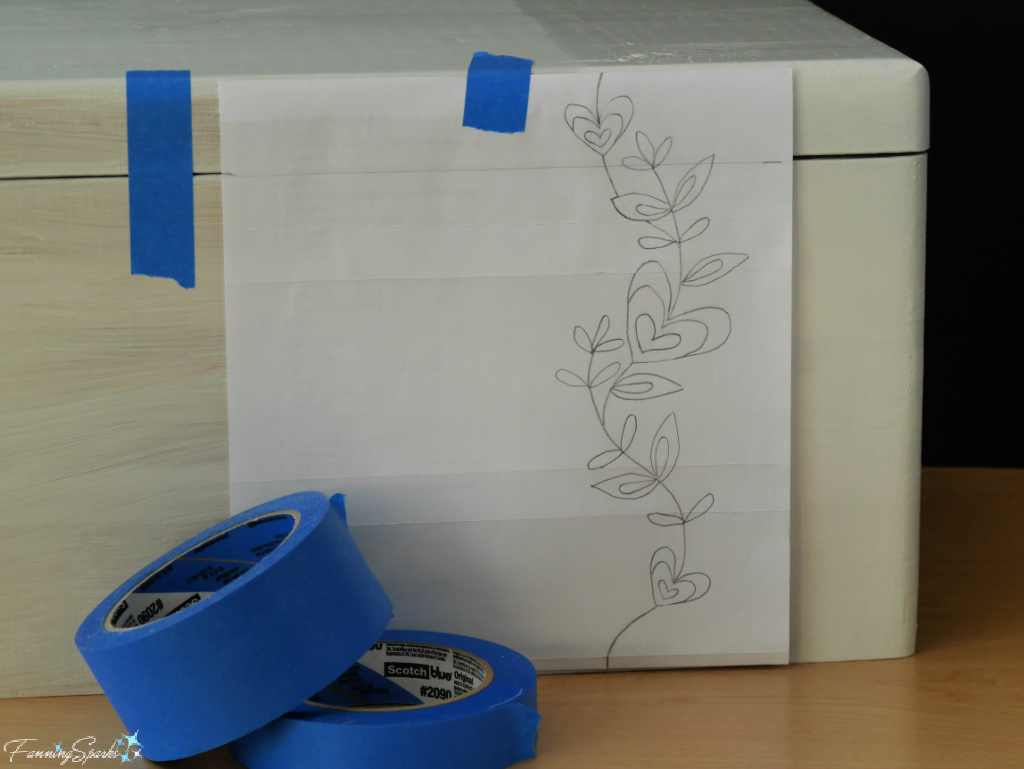
The plan was to apply the same design to all three wooden boxes so the border would flow from one box to the next. I didn’t want to stack the boxes in a specific order so I adjusted the design to align at the top and the bottom. Then I divided the design into positive and negative spaces to add some interest.

Once the design was set, I looked for an easy way to apply it to the boxes. I thought a stencil might be the way to go since the design had to be applied three times. My best option for accurately cutting a stencil is with my Cricut Explorer electronic cutting machine. But that meant converting my pencil-and-paper design into an SVG file—a task which is much more difficult than it sounds. After some effort, I realized my plan to cut a stencil for the positive/negative treatment was going to take far more effort than it was worth.
In the end, I went old school and simply traced the design onto the surfaces and painted the relevant areas with a small artist brush. I used interior/exterior satin enamel paint in Spring Glow (shown below), Green Parakeet and Indigo Batik.

Outlining the design with a black, fine-point paint marker really brought it to life.
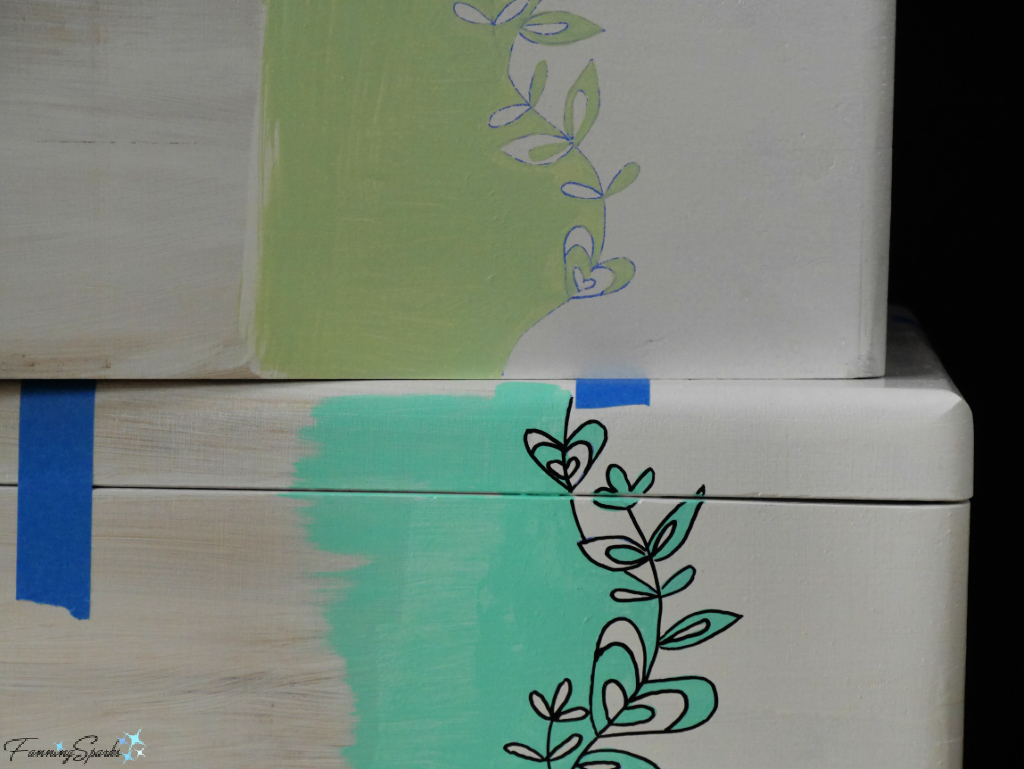
Next, I painted the left sides of the boxes to finish the positive space treatment. Here are the finished boxes.
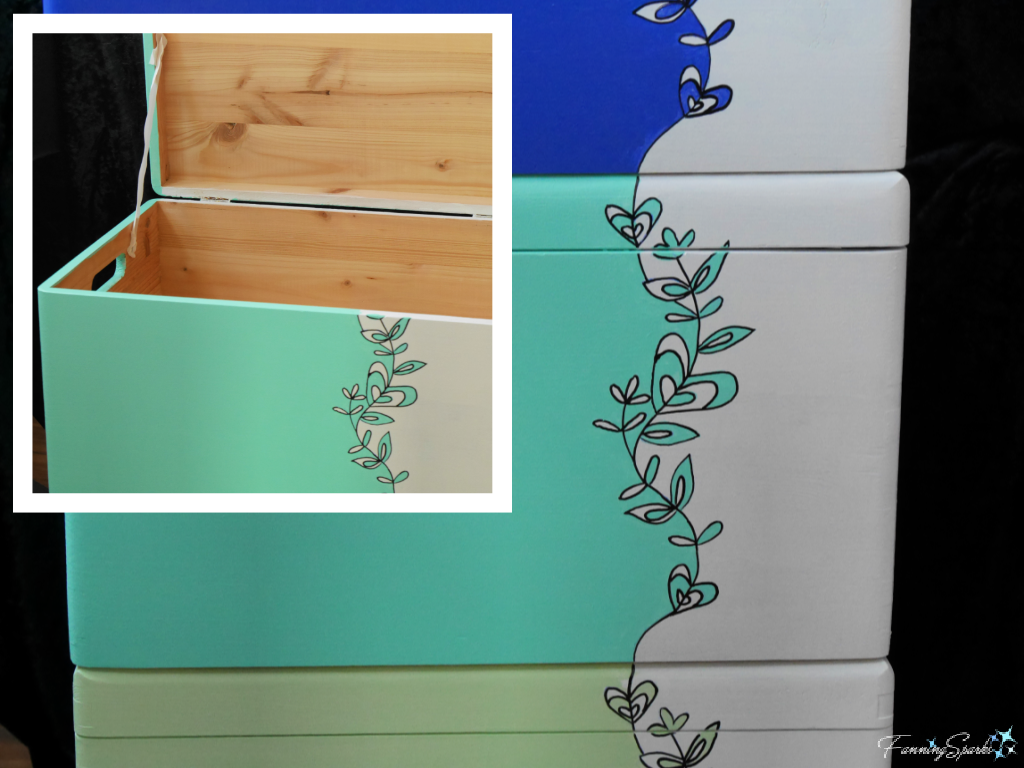
The final step was simply to clean up missed areas and sharpen the lines. I’m really pleased with how these wooden file storage boxes turned out.
But, now, I can’t procrastinate any longer… I simply MUST deal with that paper avalanche.
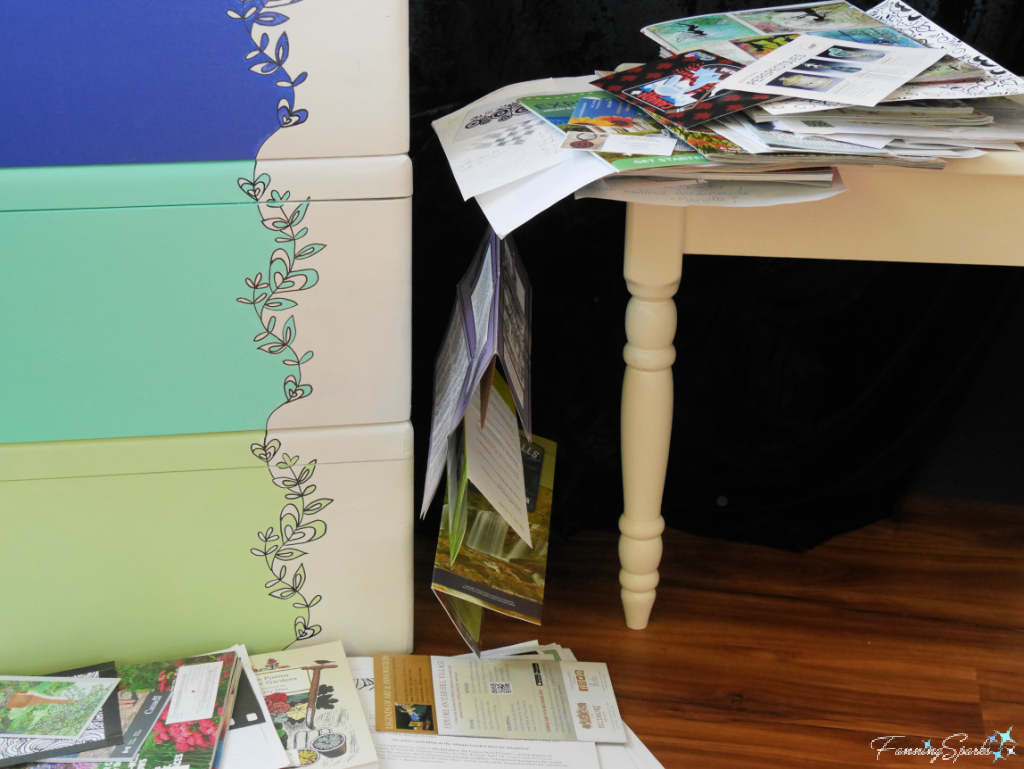
More Info
Some time ago, I came across a tutorial on creating the illusion of suspended, tumbling and falling items in photos. I always wanted to give it a try and this blog post provided the perfect opportunity. Notice how this photo appears to have captured the exact moment the papers were falling from the surface?
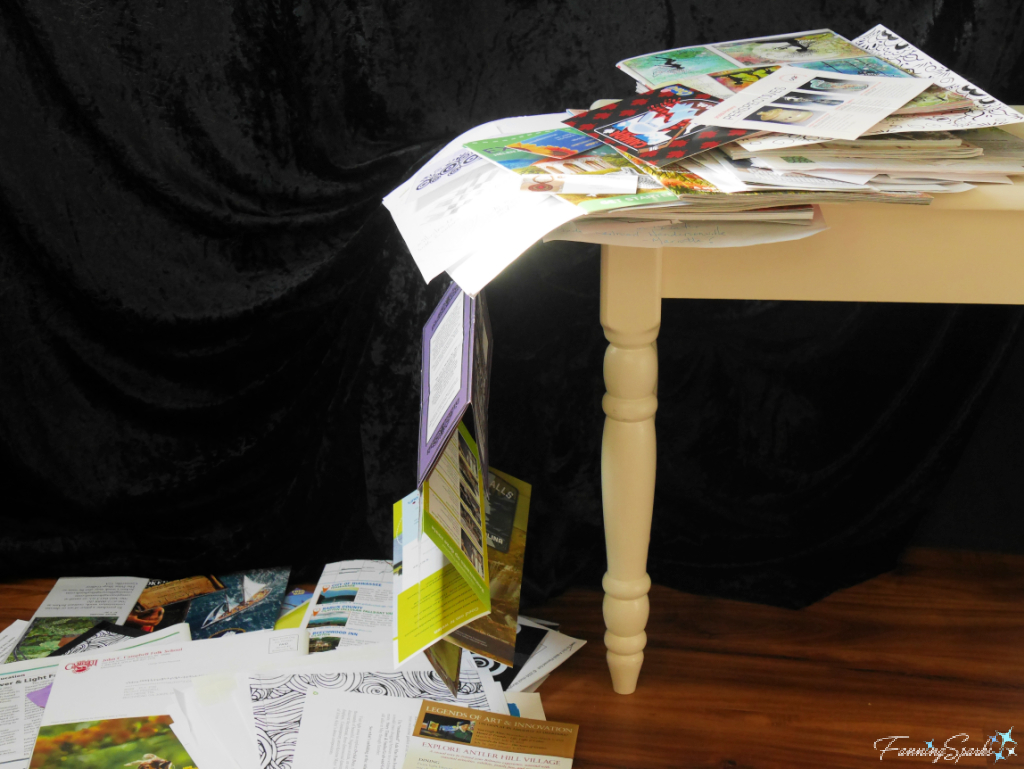
Well, it’s not quite as it seems. Here’s a peek behind the scenes where a kludgy support structure made from a stool, clamps, sticks, tape, knitting needles and scrap cardboard was carefully hidden behind a black fabric curtain. Impressive, eh?
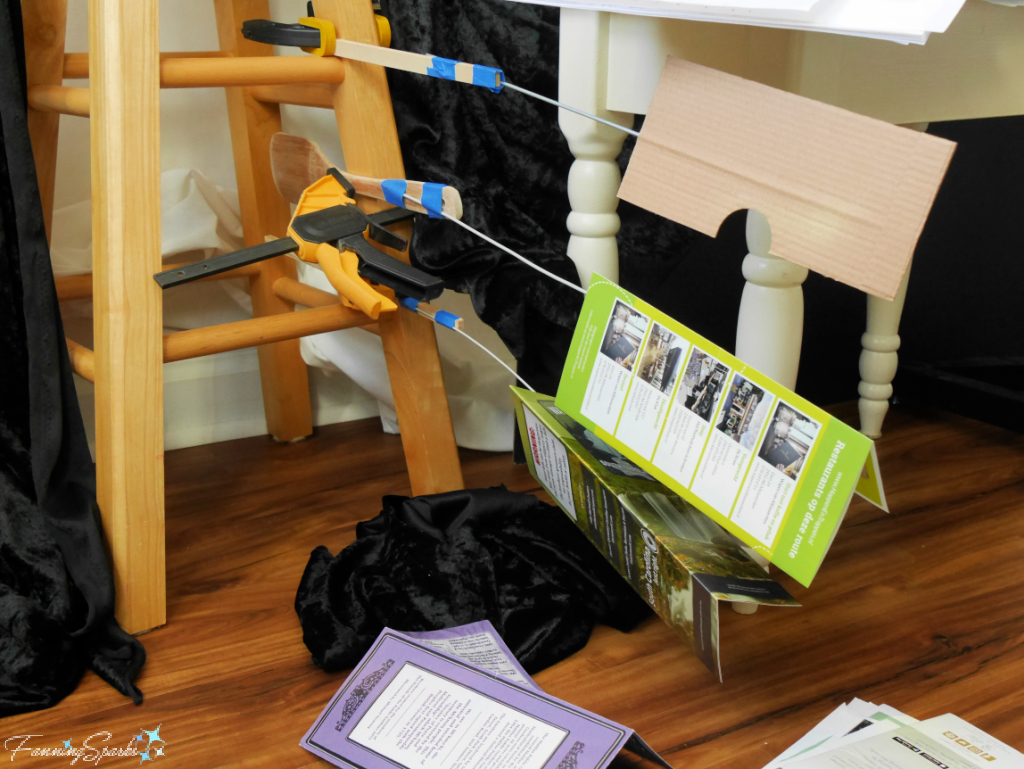
See the FanningSparks blog post, The Ultimate Maker’s Cabinet, to see how an old entertainment center can be transformed into a one-of-a-kind Maker’s Cabinet.
Check out the National Association of Productivity & Organizing Professionals (NAPO) website or their #GoMonth2023 hashtag on Instagram for more information on this organization.
UPDATE Feb 7, 2023: Check out my progress on the FanningSparks Maker Challenge to create at least three different projects featuring hearts before Valentine’s Day.
. See the blog post, Setting My Heart on a Maker Challenge, to learn how this maker challenge came about.
. The file storage boxes featured in this blog post are my first response to the challenge. You can download the design used on the file storage boxes here: Heart and Leaf Border – Complimentary Download.
. See the blog post, Maker Heart Challenge #2: Broken Heart Trivet, for my second response to the challenge.
. See the blog post, Maker Heart Challenge #3: Froufrou Sachet – DIY Tutorial, for my third response the challenge.
. See the blog post, Maker Heart Challenge Bonus: Ceramic Valentine’s Heart Box, for my fourth, and bonus, response to the challenge.
Today’s Takeaways
1. January is designated “Get Organized (GO) Month” by the National Association of Productivity & Organizing Professionals (NAPO).
2. Consider following the three steps—Evaluate, Declutter and Organize—to deal with clutter.
3. File storage boxes may be one way to get craft-related papers organized.


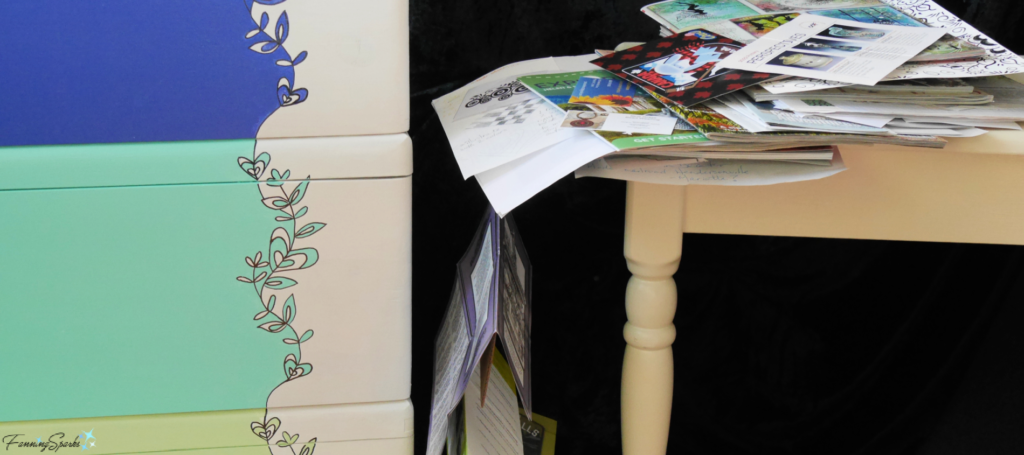


Comments are closed.